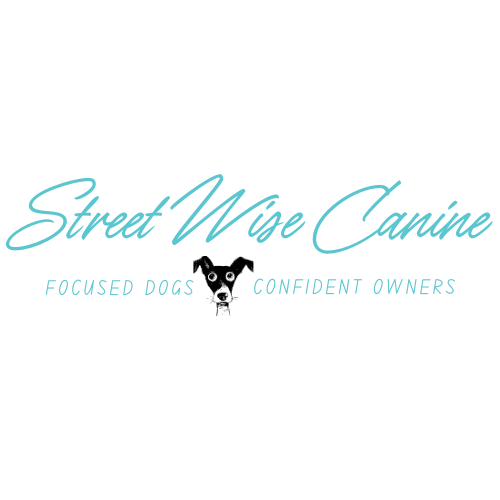Conditioned Response in Dogs: Why Your Dog Knows the Sound of Cheese Before Its Name
You know that moment when you so much as breathe near the cheese drawer, and your dog comes running like you just announced free steak for life? That, my friend, is a conditioned response in action.
Conditioned responses are what make dogs brilliant learners—and also what make them stare deep into your soul every time you so much as crinkle a food wrapper. But what exactly is a conditioned response, and why does it matter for dog training?
Let’s break it down—without too much science.
What Is a Conditioned Response? (And Why It’s Why Your Dog Knows “Fridge” But Not “Sit”)
A conditioned response happens when your dog learns to associate one thing with another—whether you meant to teach them or not. It’s a learned behavior, unlike an instinctual response (like tail wagging or chasing squirrels like they owe your dog money).
Example #1: You put on your sneakers → your dog loses their mind because sneakers = walk.
Example #2: The doorbell rings → your dog barks as if an intruder has entered your home to steal all your throw pillows.
Example #3: You open a treat jar → your dog materializes out of nowhere, sitting at Olympic-level speed.
These responses don’t happen just because. They happen because of classical conditioning, a psychological concept pioneered by Ivan Pavlov—you know, the guy with the dogs who drooled at the sound of a bell? Turns out, he was onto something.

Pavlov’s Dogs: The OG of Conditioned Responses
In the late 1800s, Pavlov discovered that if he rang a bell every time he fed his dogs, they eventually started drooling justat the sound of the bell—even when food wasn’t present.
The dogs had learned the pattern: Bell = Food → Drool.
- The bell was originally just a neutral sound (meaningless to the dog)
- The food naturally made the dogs drool (an unconditioned response).
- Over time, the bell became paired with the food, so the dogs started drooling at the bell alone.
And just like that, conditioned responses were born.
Now, let’s bring this into your actual life.
Conditioned Responses in Dog Training: Your Dog Is Always Learning
Whether you realize it or not, your dog is picking up conditioned responses all the time. Some are intentional (like training cues), and some are… well, less ideal (like when your dog starts barking at 5 p.m. on the dot because that’s when dinner usually happens).
Intentional Conditioned Responses (The Ones You Want!)
- Marker Words & Clickers – Saying “Yes!” or clicking a clicker before giving a food reward teaches your dog that the sound predicts something good. This builds faster learning.
- The Attention Sound – Teaching your dog to stop, look, and listen when they hear a specific sound helps with reactivity, engagement, and focus.
- Loose Leash Walking – If every time your dog walks nicely, they get a food reward, they begin associating a loose leash with good things happening.
Accidental Conditioned Responses (Oops.)
- Jumping at the Sound of a Leash Clip – If you only clip the leash on right before walks, your dog will learn that sound = EXCITEMENT, making it harder to get out the door calmly.
- Running Away When You Say ‘Come’ – If ‘come’ only happens when fun is about to end (like leaving the park), your dog may learn that “Come” = No More Fun → Run the Other Way.
- Overreacting to the Doorbell – If every time the doorbell rings, excitement or chaos follows (people arriving, yelling, dogs getting shooed away), the doorbell itself becomes a trigger.
How to Use Conditioned Responses to Your Advantage
Conditioned responses aren’t just about recognizing what your dog is already doing—they’re about using it to shape better behavior.
- Be Intentional – If your dog is always making connections between things, make sure you’re creating the ones you want. Reward the behaviors you want to see more of.
- Reinforce What Matters – If you want your dog to focus on you more, start rewarding voluntary check-ins throughout the day. If you want calmer door greetings, practice reinforcing sitting when people arrive.
- Break the Unwanted Patterns – If your dog loses their mind when you grab the leash, pick it up at random times without actually going for a walk. If they ignore “Come,” start using it for good things (like meals, play, and treats), not just “fun is over” moments.

Final Thoughts: Train the Dog in Front of You
Dogs aren’t born knowing what we want from them—they learn through association. Every single day, your dog is picking up on patterns, cues, and signals from the world around them (and from you!).
Whether it’s conditioning them to pay attention to a marker word, teaching them that the leash doesn’t always mean go time, or (finally) breaking the 5 p.m. dinnertime protest barks, understanding conditioned responses makes you a bettertrainer.
So, what’s the next conditioned response you want to teach? And if your dog already has a PhD in cheese drawer detection… well, at least you know how it happened.
Want to learn more about using conditioned responses in training?
Join one of our group classes in Delhi, Ontario!
From building food motivation to teaching focus & engagement, we help dogs learn in a way that makes sense for them.
Cher Wood
Street Wise Canine
